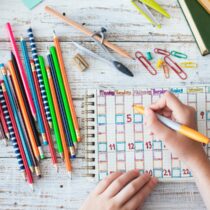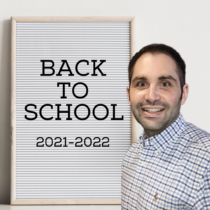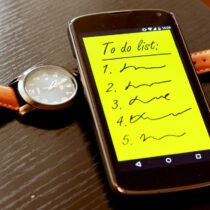
Your child or teen has likely been back at school for at least a few weeks. Now that you probably have a clearer sense of what to expect with the new school year, it is a great time to review the systems and routines that have been set up, see what is working, what is not, and even what you started implementing and have not kept up with.
Homework
- Does your child/teen know what assignments they must do each day or week?
- Are they clear on where to locate them?
- Is your child not getting all their assignments turned in and on time?
- Is their desk or work area still very neat and organized like it may have been when school started? Does it need to be managed or cleaned again?
Possible solutions
- Encourage your child/teen to list out all assignments they need to complete each day/week. This could be done in a paper planner, Google Doc, electronic planner/task list, whiteboard, or elsewhere.
- Recommend that your child/teen mark off each assignment after it has been completed/turned in and sit down together to double-check that every task has been completed if needed.
- Encourage your child/teen to check their online portal daily (if applicable) to catch any missing assignments quickly.
- Have a weekly check-in where you review the grade portal/upcoming assignments together and make a plan for the week. Reviewing the weekly schedule and planning for days when there is less time to complete homework would be helpful.
- Consider keeping a typed log of the main things discussed and agreed to (i.e., child will talk with teacher about missing homework from 9/18) to make it easier to increase accountability about follow-through.
- Have a set time each day to ensure the desk area is organized and tweak things as needed. Doing a more thorough cleaning/organizing of the space may be necessary first.
Morning routine
- Is your child/teen consistently getting up on time for school?
- Have you solidified a system for ensuring everything is packed up (including lunches, if applicable)?
Possible solutions
- Create a checklist for the things that must be completed in the morning.
- Adjust the method for using alarms. Consider one alarm as the initial wake-up and a second to indicate that it is time to get out of bed. If typical alarms are insufficient, consider an app such as Alarmy or unconventional alarm clocks such as ones that vibrate or roll.
Evening routine
- Is your child/teen getting to bed on time?
- Does your child/teen have enough time to finish homework without staying up late?
Possible solutions
- Create a set time to begin the evening wind down where your child/teen disconnects from electronics, does an activity to relax, and then starts getting ready for bed.
- Consider encouraging your child/teen to review their weekly schedule and block out chunks of time for homework. If they use the available time regularly and still cannot get task done without staying up late, see what afterschool activities can be adjusted to allocate more time for homework. Alternatively, determine if more time on the weekends could be used for schoolwork to offset the time needed in the evenings.
Organizing everyone’s schedule
- Are you overwhelmed keeping track of your child/teen’s schedule with sports, other afterschool activities, doctor’s appointments, and other items?
Possible solutions
- Shared electronic family calendar (color-coded by person if desired) such as Apple or Google Calendar.
- Travel time, who is doing which drop off/pick up, and other essential details included in the event.
- Shared task list system (i.e., Reminders app, Todoist)
- Whiteboard in a common area with a weekly or monthly schedule
- It needs to be checked and updated regularly.
- Weekly family meetings to review the week ahead, address logistics when transportation issues are present, plan ahead for dinner based on activities, and cover other relevant things as needed.
I hope this article helps get you thinking about what you and your child/teen should continue doing, get back on track with, and what you could start doing to make things easier and better.





























